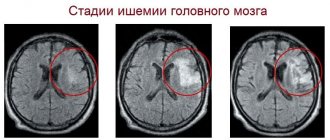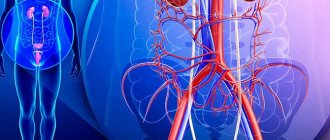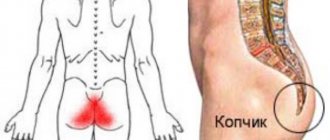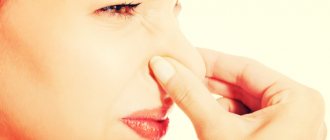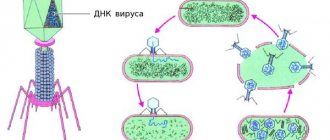February 3, 2021
Incontinence (enuresis) is said to occur when there is uncontrolled, involuntary loss of urine. It is important to consult a doctor with this problem as early as possible. When therapy is started on time, treatment brings good results. Among men with this problem, only 30% go to the doctor. Missed time can aggravate the situation, so it is important to overcome embarrassment and a false sense of shame and contact a specialist. Next, we will tell you in more detail about the causes of incontinence and how to cope with it.
Treatment of urinary incontinence in men
Urinary incontinence in men is the body's loss of ability to control urination, resulting in the involuntary release of urine. What happens in the body when bladder control problems occur? During urination, the muscles around the urethra relax and allow fluid to leave the body. When the muscles in and around the bladder do not function properly, this unpleasant symptom most often occurs. This usually occurs when the muscles suddenly relax.
How does urination occur?
The detrusor muscle located in the bladder is responsible for urination. In the normal state, the sphincter muscles located in the neck of the bladder are tightly closed. The accumulating urine stretches the walls of the bladder, the pressure stimulates the receptors located in them. The detrusor tenses, the bladder relaxes and the person realizes that it is time to visit the toilet.
For urination to occur, the pressure in the urethra must be lower than in the detrusor. A healthy person reflexively controls the force of pressure using his own muscles.
In the case of pathology, a person cannot control the process of urination - completely or partially. Nerve impulses imitate false urges, and uncontrolled urination occurs.
The delicate nature of the problem leads to the fact that people try to hide the illness from their family and others and become isolated psychologically. A person suffering from enuresis feels awkward in everyday life, is embarrassed to go out to the shops or to work, or to maintain friendly connections. In the worst cases, psycho-emotional deviations become fixed in behavior.
Causes of urinary incontinence in men
Incontinence is much more common in women because it occurs as a result of pregnancy and childbirth. This problem in men occurs more often with age and is caused by diseases of the prostate gland, pathologies that affect the nervous system, and injuries. There are three main types of incontinence:
- Stress urinary incontinence. Occurs when pressure inside the bladder increases from heavy lifting, coughing or sneezing. High blood pressure can cause urine to leak;
- Urgent urinary incontinence. Characterized by the inability to control the urge to urinate;
- Urinary incontinence due to bladder overflow. With this type of disease, urine leaks in small quantities even in the absence of calls to urinate.
The causes and treatment of the problem are closely interrelated. Prostate diseases are the most common prerequisites for the appearance of pathology in older men. The prostate is located under the bladder, around the urethra. As you age, it increases in size and begins to affect the flow of urine.
Additionally, common causes of incontinence in men include difficulties with nerve and muscle control. Anything that affects the nerve or muscle function of the sphincter causes problems with urine control. Other prerequisites for the appearance of the symptom are:
- Benign prostatic hyperplasia;
- Surgical intervention on the prostate gland;
- Diabetes;
- Stroke;
- Neurological diseases;
- Spinal injury;
- Temporary causes of incontinence. Examples include drinking too much caffeine or alcohol, constipation, having a urinary tract infection, depression, and taking certain medications.
What to do until treatment helps?
Urine absorption measures play an important role in the treatment of incontinence, helping to better control the hygienic inconveniences caused by incontinence (dryness, odor control, etc.). When choosing an absorbent device - diapers or men's pads - take into account:
- degree of urinary incontinence;
- amount of liquid;
- need for assistance in changing hygiene products;
- the basic position and activity of the patient.
Patients with urinary incontinence should choose products that best suit their needs. Using the wrong urine absorbent can lead to other problems.
- In cases of mild to moderate urinary incontinence, male pads are recommended. Men often make the mistake of thinking that such urine absorbers are only for women. Men's hygiene products correspond to the male anatomy, therefore they fit well, have a system for neutralizing unpleasant odors, and have different levels of absorption.
- If urinary incontinence is moderate, patients can use special men's protective underwear.
- If urinary incontinence is severe and treatment is impossible, diapers will have to be used. Depending on the need, you can choose from different types, such as anatomical, striped or panties. Modern diapers absorb and retain urine well, reduce the unpleasant smell of urine, are convenient and easy to use, but they are unlikely to suit a man who wants to live a full life. Therefore, this option is a last resort.
Diapers for urinary incontinence
Diagnosis and treatment
Urinary incontinence in men is a good reason to make an appointment with a urologist. To carry out diagnostics, he is obliged to familiarize himself with the patient’s medical history. The doctor will ask several questions related to your urination patterns. A physical examination will then be performed. A doctor can diagnose urinary incontinence based on your medical history and physical examination, but sometimes additional tests (such as urodynamic studies) may be needed. Treatment depends on the type of urinary incontinence the individual patient has. Prescribing effective therapy is the main task of the doctor. Our clinic in Moscow offers modern methods of treating the disease, which are successfully used all over the world. As a first line of treatment, your doctor may recommend the following methods to treat the problem:
- Lifestyle changes;
- Bladder training;
- Exercises on the pelvic floor.
Can also be used: Medicines; Fillers; Surgery; If the cause of the unpleasant symptom is prostate enlargement, the doctor prescribes one of the following medications:
- Alpha blockers. They relax the muscles in the prostate gland;
- Finasteride. It blocks the action of the male hormone testosterone on the prostate, causing it to shrink in size;
- Anticholinergic drugs. These remedies are used if symptoms are caused by an overactive bladder. They act directly on his muscles.
In addition, various combinations of drugs may be present. Depending on the cause, sometimes it becomes necessary to prescribe surgical treatment. In this case, surgery often involves removing excess prostate tissue to improve the flow of urine through the urethra.
| Code | Name | Price |
| 03.00 | Initial appointment with a urologist (candidate of medical sciences) | 2,000 rub. |
| 03.04 | Repeated appointment with a urologist (candidate of medical sciences) | 1,200 rub. |
| 03.60 | Initial appointment with a urologist (MD) | 5,000 rub. |
| 03.61 | Repeated appointment with a urologist (MD) | 3,000 rub. |
| All prices of the men's and women's health clinic | ||
Anatomy and excretory system of the male urinary organs
The urinary organs remove the end products of decomposition - urea, uric acid and other products formed during the metabolic process in the body.
The urinary system consists of the excretory organs, kidneys and urinary tract, ureters, bladder and urethra.
urinary system
The kidneys are a porous organ located in the abdominal cavity. The right kidney is slightly lower than the left, although their position is not constant. The position of the kidneys depends on age, gender, and body type. Depending on the gender, they can weigh 125–170 g, have a length of 11–12 cm, a width of 5–7.5 cm, and a thickness of 2.5–4 cm.
The kidney is surrounded by a fatty capsule that protects and supports it. In the middle of the inner edge of the kidney is the renal cavity, also known as the renal hilum, through which the large renal blood vessels (arteries and veins), nerves, and ureters enter and exit the kidneys.
The kidneys filter all the blood in the body. About 150-180 liters of primary urine are filtered through them per day, and 1.5-2 liters are ultimately excreted.
The structural and functional unit of the kidney is the nephron, which consists of a glomerulus of capillary balls and renal tubules emerging from it. The latter open into the renal calyces. The calyx of the kidneys forms the renal cell, which passes into the urethra. The most important functions of the kidneys are:
General kidney functions
:
- Regulate the amount of water and electrolytes (Na +, K +, Ca2 +, Cl-, etc.) in the body fluid.
- Maintains normal acid-base balance.
- They remove from the body unnecessary and toxic substances of final metabolism, for example, urea, uric acid, phosphates, sulfates, and excrete urine.
Endocrine functions of the kidneys
. Produce and secrete hormones:
- erythropoietin, necessary for the synthesis of hemoglobin;
- angiotensin II, which is important for blood pressure control;
- calcitriol, involved in the metabolism of calcium and phosphorus).
Metabolic functions of the kidneys
. The kidneys are actively involved in the metabolism of proteins, fats and carbohydrates.
The ureter is a paired tubular organ that connects the kidney cell to the bladder. Length 30-35 cm. The urethra descends along the posterior wall of the abdominal cavity and opens at the bottom of the bladder.
The bladder acts as a urinary reservoir. Bladder capacity 350-600 ml. The bladder reflex occurs in the bladder due to the concentration of 200 to 250 ml of urine. When pressure in the bladder increases due to accumulated urine, receptors on the wall of the bladder are stimulated and impulses are transmitted to the urinary center. The stimulation emanating from the center constricts the bladder muscles and relaxes the voluntary external and involuntary internal wrinkles (sphincters), causing urine to be pushed out through the urethra.
In men, the urethra crosses the prostate gland (prostate), the seminal vesicles open into it, and the urethra opens at the head of the penis. Improper functioning of the urinary system can lead not only to urinary incontinence, but also to more serious consequences.
conclusions
Urinary incontinence is a common problem in older adults that negatively impacts a person's quality of life and is costly to the healthcare system. Older patients often do not tell their doctor about this problem or ask about treatment options. Based on current practice guidelines, the clinician should be able to identify, evaluate, and treat urinary incontinence.
In cases of stress, mixed and urge urinary incontinence, some physiotherapeutic measures and medications are appropriate. Lifestyle correction and training of the pelvic floor and/or bladder muscles are necessary.
Auxiliary products - pads or diapers for men help absorb and retain urine, reduce the unpleasant odor of urine, which ensures a stable emotional and psychological state for men, but do not solve the problem. Therefore, in order to avoid wearing diapers for the rest of your life, at the first symptoms of urinary incontinence you should immediately contact a urologist.
ONLINE REGISTRATION at the DIANA clinic
You can sign up by calling the toll-free phone number 8-800-707-15-60 or filling out the contact form. In this case, we will contact you ourselves.
If you find an error, please select a piece of text and press Ctrl+Enter
What are the treatment methods?
At the initial stage, treatment methods are quite simple; surgical intervention, as a rule, is not required; conservative measures, non-drug and medicinal, are used:
- Kegel exercises strengthen muscle tissue.
- Special devices can be inserted into the vagina to stimulate the functionality of the organs with electrical impulses.
- Biofeedback therapy is carried out using sensors attached to the patient’s body. They transmit a signal to the monitor when the perineum is tense and relaxed, focusing on the resulting image, the woman learns to control the pelvic muscles.
- Another method of strengthening the muscular system is to place weights in the vagina, which need to be held there using muscle strength. As the muscles strengthen, the weights of the weights are increased, which allows you to develop self-control skills when urinating.
- As a therapeutic measure, it is recommended to normalize body weight, avoid smoking, which provokes coughing, and heavy physical activity.
- Drug therapy involves the use of antidepressants, hormonal drugs, and estrogens.
In the later stages, it is rarely possible to do without surgical techniques. Modern medicine prefers treatment using sling urethropexy with a synthetic loop. With this intervention, after inserting it into the patient’s body, the loop is placed under the urethra - the middle part of the organ - which allows it to be stretched to the required state. The surgeon makes the necessary adjustments and fixes the loop. The operation can be performed using local anesthesia. After the procedure, relapse is possible in 10-20%.
In addition to the loop, hydrogels can be used, which are inserted into the sphincter area. Such substances maintain weak muscles in the desired tone, organizing a locking effect. But this method has certain disadvantages - the biocompatibility of the drugs is too low, moreover, they quickly dissolve and can move in the tissues.
Also, to eliminate the pathological condition, anterior colporrhaphy, urethrocystoscopy, and an artificial sphincter are implanted. This list can be further expanded, since over 200 methods of surgical intervention have been developed for this type of incontinence.
It should be noted that the treatment methods for men are in many ways similar to those used in cases when it comes to the fairer sex. Men can be prescribed training of the muscle tissue of the pelvic floor using Kegel exercises, using the biofeedback method. They use behavioral therapy and quite actively use neuromodulation based on electrical stimulation, for which the nerve fibers responsible for the functionality of the urination mechanism are stimulated with very weak electric current discharges. Stimulation of the sphincters, the muscle tissue of the pelvic floor, is especially effective.
Patient examination methods
Enuresis is a separate syndrome that occurs in a variety of diseases. Therefore, diagnosis begins with a thorough examination and history taking . At the first stage of the examination, the patient is asked to keep a special diary, where he must indicate the frequency of urination, the approximate volume of urine, and the number of urges to urinate.
You also need to do:
- clinical and bacteriological analysis of urine (pay attention to laboratory signs of the inflammatory process - the presence of leukocytes, erythrocytes, bacteria);
- blood test to determine serum iron and sugar levels;
- Ultrasound of the kidneys, prostate;
- catheterization of the bladder with determination of the volume of residual urine;
- cystourethrography;
- excretory urography;
- MR urethrography;
- urodynamic tests.
Why you need to treat nocturnal enuresis
There is not a single person who would like to sleep in diapers or wake up in a puddle of urine. A constant smell, wet underwear and judgmental glances from even the closest people are the eternal companions of people with NE.
Patients with nocturnal enuresis cannot live a normal life: travel is excluded for them, and they have to sleep alone. This is oppressive, an inferiority complex develops, and the psyche is destroyed.
As for health, enuresis is often only a symptom of a disease that requires mandatory treatment, especially when it comes to the kidneys or hormonal imbalance.
1.General information
With the development, deepening and increasingly subtle differentiation of medical knowledge, new sections and specialties arise. As a rule, they are at the intersection of established, historically established disciplines, sometimes very distant (seemingly) in terms of object, methods of study and treatment. However, it is precisely such hybrid directions that make it possible to reveal previously unknown relationships between phenomena and processes, obtaining new, sometimes unexpected, but very valuable and practically significant data on how the human body functions in normal and pathological conditions. One of the youngest, most promising, rapidly developing areas of this kind is neurourology, the entire history of which goes back a little more than twenty years. This subsection of general urology deals with problems of impaired urination in their dependence on various neuropathological conditions, processes and anomalies. Actually, this kind of connection was known to ancient doctors, but only at the level of empirical observations; Until recently, there was no discipline that would specifically study long-described neurological syndromes in their effect on urinary function.
One of the most common disorders in this area is enuresis. In its strictest sense, the term means any involuntary, not consciously controlled, release of urine. However, it is often interpreted by non-specialists in a restrictive, distorted or perverse sense. Thus, enuresis is often perceived as an exclusively childhood disease (which is fundamentally wrong: at least 2% of the adult population suffers from enuresis to one degree or another, and one can only guess how much this percentage would increase if all undiagnosed cases were taken into account - when patients, resigned to the imaginary “incurability”, do not consult a doctor); are considered a purely nocturnal phenomenon (which is also not true), on this basis they are confused with nocturia (imperative night urges with awakening and controlled urination), they seek help from psychologists, psychiatrists, psychotherapists - in cases where enuresis objectively has a somatic or neurological background .
There is every reason to believe that these misconceptions and prejudices that exist regarding enuresis in adults will be overcome as neurourological theory and practice develops.
A must read! Help with treatment and hospitalization!
Disease statistics
Incontinence occurs in 20% of the world's population. The difficulty of studying and disseminating pathology is complicated by the fact that only a few people approach medical institutions with it. According to medical statistics, in Russia 12-70% of children and 15-40% of adults suffer from incontinence. The problem occurs in both women and men, but under the age of 40 the female half of the population is more susceptible to it. But in men, incontinence manifests itself at a later age - this is due to age-related changes in the prostate.
Urinary incontinence brings not only physical inconvenience, but also psychological one. Patients complain of a significant deterioration in the quality of life, the manifestation of psycho-emotional disorders, and disruption of adaptation in everyday, family and professional spheres of life. Urinary incontinence is not an independent disease, but a symptom of other pathological processes in the body. A urologist necessarily prescribes an examination and identifies the underlying disease, which allows this consequence to be eliminated.
Operative medicine
As for surgical medicine, the following can be applied:
- Injection technique with the introduction of agents to increase volume.
- Use of stem cells.
- The use of sling systems made of synthetic materials - such loops are fixed with titanium screws, attaching them to the pubisciatic branches.
- The use of adjustable sling systems with a regulator in the form of a permanent subcutaneous implant, a self-fixing sling.
- When using the ProACT system, special balloons are placed on the neck of the bladder, and the volume is adjusted using titanium ports placed in the scrotum.
- One of the most commonly used methods is the use of an artificial urinary sphincter, although the insertion operation is expensive and requires the surgeon to have extensive experience in performing such operations. The increased risk of infection should also be taken into account along with the possibility of urethral atrophy, given the prolonged exposure to increased pressure on the organ.
As for the treatment of small patients, surgical intervention is used for congenital disorders - urethroplasty, suturing of bladder fistulas, sphincteroplasty and other operations are involved. If the problem occurs against the background of inflammatory pathologies, conservative therapy for pyelonephritis, urethritis or cystitis is prescribed. In cases where mental disorders contribute to incontinence, it is necessary to visit child psychologists and psychiatrists, and in case of insufficient functionality of the nervous system, nootropic drugs are used.
It is equally important to exclude stressful situations from the child’s life, limit the consumption of various drinks before going to bed, and use forced wake-up at night with putting him on the potty. The most effective physiotherapeutic methods include diathermy, magnetic therapy, darsonvalization, electrophoresis, electrical stimulation of the bladder and others.
Drug therapy
Drug therapy involves prescribing drugs:
- toning the work of certain muscles;
- improving blood microcirculation in the organs of the genitourinary system;
- stabilizing the control of the central nervous system over the work of the urinary ducts;
- having anti-inflammatory and antimicrobial properties;
- capable of regulating hormonal levels.
Physiotherapy and diet are indicated to regulate body weight. As practice shows, most types of incontinence can be eliminated through conservative methods alone, but subject to timely intervention.
Why do people pee: the brain argues with the kidneys
The content of the article
The causes of urinary incontinence are well known: enuresis is caused by pathologies of the central nervous system, incoordination of the bladder and brain, nocturnal polyuria (increased urine production) associated with hormonal abnormalities, and kidney disease.
Hormonal causes of enuresis were previously practically not considered, but it is now known that hormone imbalance is the cause of almost half of the cases of the disease. Moreover, the failure can occur at any level - in the pituitary gland, thyroid gland or respiratory organs.
Thus, apnea (respiratory arrest due to adenoids, snoring, obstructive bronchitis, etc.) leads to insufficient oxygen supply to the brain (hypoxia), which in turn leads to a lack of production of vasopressin (ADH), a hormone responsible for the proper functioning of the kidneys.
The less ADH is secreted, the more urine is produced: some patients can accumulate up to 20 liters per night! No bladder can hold such an amount.
In addition, the lack of certain sex hormones leads to weakening of internal muscles, in other words, to their aging. The organs sag and put pressure on the bladder, reducing its volume. This phenomenon is often observed in women during menopause. It has been established that women suffer from enuresis three times more than men.
Scientists say that most patients with enuresis have genetic prerequisites for this. A gene responsible for the development of NE has been discovered. Another cause of enuresis is sleep disturbances, when the patient sleeps “like dead” and does not feel the urge.
Are there pills for enuresis?
Urologists are often asked what medications should be taken for nocturnal enuresis in adults. This question can only be answered by knowing exactly the cause of the disease:
- A drug that contains antidiuretic hormone and reduces nighttime urine production may be prescribed.
- For neurotic enuresis, sedatives and mild antidepressants are prescribed.
- There is a method that involves taking combination drugs containing ephedrine. These powerful medications are available by prescription.
But it is not possible to cure enuresis with dietary supplements, since they do not contain real drugs.
